Let’s improve our cookie game! Find out what makes cookies spread and learn how to keep cookies from spreading!
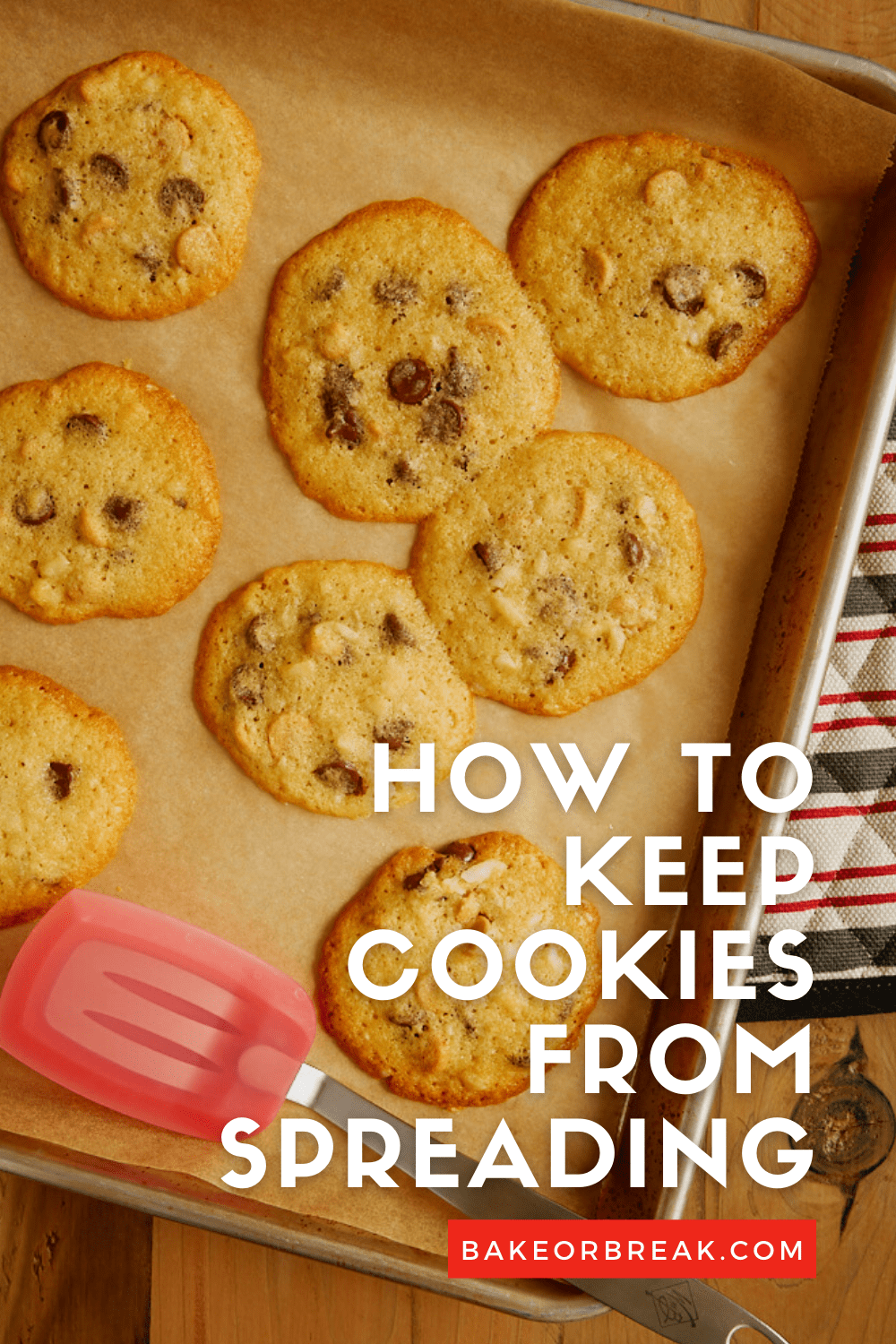
We’ve all been there. You mix some cookie dough, put them in the oven to bake, and then find that they’ve spread out way too much. Maybe the cookies have spread just enough to touch the other cookies. Or maybe they’ve even morphed into one giant, oddly-shaped cookie. You know they’ll taste just fine, but their looks leave something to be desired.
I wish I could give you one magical fix for cookie spread. In reality, a number of things can make your cookies spread too much. Sometimes it’s something that seems innocuous, and sometimes it’s something a bit more significant.
If you’re having trouble with your cookies spreading, review these potential cookie-spreading culprits, and you’ll be able to pinpoint where things went wrong. Plus, I’ve interspersed some of my favorite cookie recipes for a little baking inspiration.
Bake or Break is a participant in the Amazon Services LLC Associates Program, an affiliate advertising program designed to provide a means for us to earn fees by linking to Amazon.com and affiliated sites.
Why do cookies spread?
Cookie dough too warm or too soft – This is why you see many cookie recipes instruct you to refrigerate the dough before baking. Chilling solidifies the butter (or other fat) in cookies so that it takes longer for it to melt. Melting too soon means spreading happens too early. Some cookie doughs will work just fine going straight from mixing to the oven, but even with those you should be mindful of this if you have a warm kitchen. When it’s chilling time, you can shape the dough first or just chill the whole bowl of dough. Don’t forget that you can also freeze most cookie doughs. About 1-2 hours of chilling is usually plenty for most cookies. Some require longer chilling times, so just follow the recipe’s recommendation if it has one. Most doughs can even be refrigerated overnight.
Brown Sugar Oatmeal Chocolate Chip Cookies
Too much sugar, eggs, or other liquid ingredients – It’s easy to forget that sugar is considered a liquid ingredient. It releases liquid during baking, so having too much will make the dough unable to hold its shape. When it comes to eggs, don’t use a different size egg than listed in the recipe. With only a rare exception, the cookie recipes here on BoB use large eggs.
Butter too warm or too cold – If your butter is too warm, your cookies won’t hold their shape well. If it’s too cold, that leads to overmixing, which we’ll discuss a little further down. I’m not sure I was ever told the correct way to soften butter. It’s just something that shows up frequently in baking recipes.
Butter will start to melt at a lower temperature than you might think. For softened butter, you want it to be somewhere in the 65°F to 68°F range. For most of us, that is most definitely not room temperature. If you want to be super specific, you can use a probe thermometer. I don’t go that far, but I instead rely on it usually taking 25-30 minutes at room temp. (Or slice it to expedite that a bit.)
If you set out your butter while you gather and measure all your other ingredients, preheat your oven, and prepare your pans, it may be about ready by the time you are. Learn what softened butter should feel like. You should be able to make a small indentation in the butter with your finger while the rest of the butter holds its shape. (Read more at How to Soften Butter.)
Substituting margarine for butter – Margarine has a high water content, and we just talked about what too much liquid can do to cookies. As a general rule, I highly recommend that you just don’t bake with margarine.
Salted Double Chocolate Cookies
Substituting different flour – It may seem innocent enough to grab that pastry flour in your pantry that you’ve been meaning to use, but that softer flour has less gluten which can make your cookies spread. Something like bread flour has more gluten, which can create other issues. For best results, use the kind listed in the ingredients of the recipe. (Read more at A Baker’s Guide to Wheat Flours.)
Inaccurate measurements – This is actually a big reason why many baking recipes fail, not just cookies. Too much of this, too little of that, and you may just have a mess. As I mentioned above, too much sugar is definitely a problem, but the accuracy of the measurements of all the ingredients is important for helping ensure the best outcome. (See also How to Measure Flour.)
Key Lime Crinkle Cookies
Old baking powder or baking soda – These will lose their leavening abilities over time. It’s easy to test your leaveners to make sure they’re still up to the job. About a half teaspoon of baking soda in a tablespoon of vinegar should immediately create some serious fizz. A half teaspoon of baking powder in a couple of tablespoons of water should create a bubbly foam.
Over-mixing butter and sugar – Beating incorporates air, which you want to keep to a minimum for most cookies, otherwise they may rise more than they should while baking and then fall. Mix the butter and sugar just until blended, usually less than a minute with an electric mixer. I prefer using a hand mixer because it’s too easy to walk away from a stand mixer and let it mix too long.
Sugar and Spice Cookies
Using a hot/warm pan – If you’re reusing a pan while baking cookies, be sure to let it cool completely. Placing dough on a too-warm cookie sheet will warm up the dough before it even hits the oven, resulting in spreading. Also watch out for setting pans on top of an oven that gets hot. I have a small kitchen, so I know it’s hard to resist using that space when you run out of countertop room.
Over-greasing cookie sheets – I can’t remember the last time I greased a cookie sheet. I highly recommend using parchment paper or a silicone liner for your pans. Clean up is easier, baking is more even, and your cookies won’t stick. That’s not to mention that adding something slick like baking spray or butter to your pan just makes it easier for your cookies to spread. However, if you opt to use a baking spray, don’t go overboard with it. (Also see Unlined vs Lined Baking Sheets.)
Peanut Butter Snickerdoodles
Oven temp too high – When your oven temperature is too high, the butter (or other fat) in the cookies melts too quickly, causing them to spread. It’s easy to double check your oven’s temperature accuracy with an inexpensive oven thermometer and then adjust your oven’s temperature setting if needed. If the problem persists with a specific recipe and you’ve ruled out other reasons, try reducing the temperature and baking longer.
Overcrowding on the pan – Most cookies will spread to some degree, so make sure you’re giving them the room they need. The standard is 2 inches between cookies, but many recipes will specify how far apart you should place the dough.
Oatmeal Peanut Butter Chocolate Chip Cookies
Spreading after they’re baked? – If your cookies look great when you take them out of the oven but spread as they cool, you may be leaving them on the cookie sheet too long. Residual heat from the pan continues baking the cookies (which can also lead to over-baked cookies with dark bottoms) after they’ve been removed from the oven. My preferred method of cooling is to place the pan directly from the oven to a wire rack to allow air to flow all around the pan. Then after the suggested cooling time, I transfer the cookies from the pan to a wire rack to cool completely. (Read more at Why Every Baker Needs Wire Cooling Racks.)
Whew. If you’re still with me, you now see that there are many factors that can affect how much cookies spread. But I’m guessing that you’ll be able to narrow things down fairly quickly.
I’ll be the first to tell you that if I bake a batch of cookies that spread too much, I’m definitely disappointed. But it’s good to remember that they’ll still taste just fine!
Find dozens of cookie recipes in the Recipe Index.

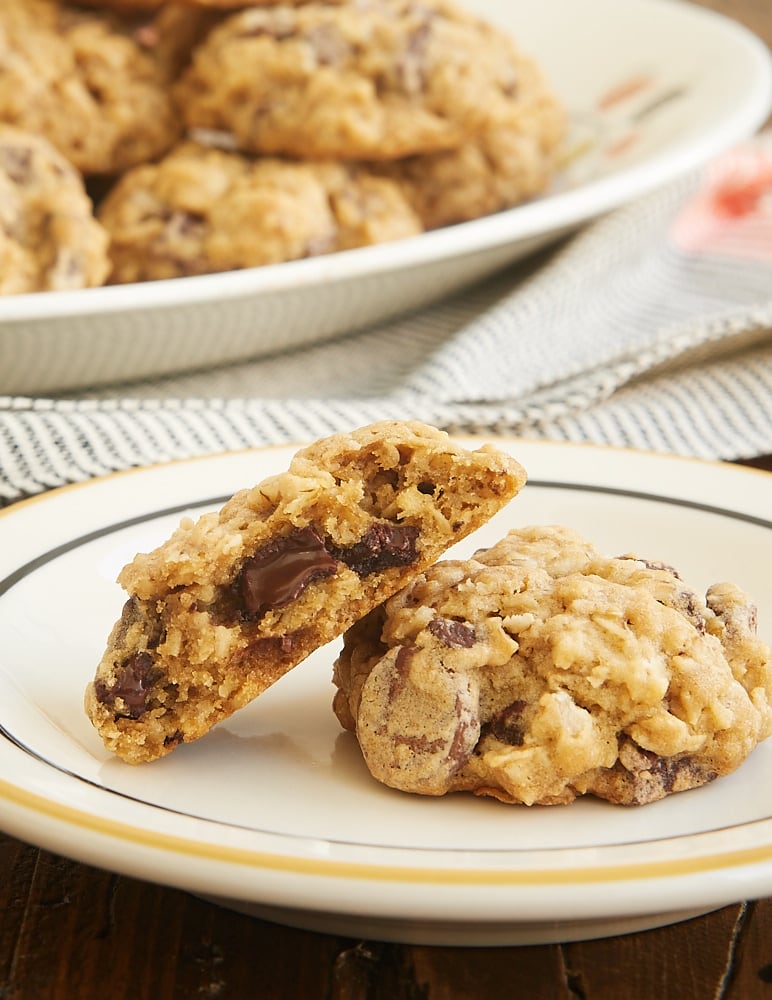
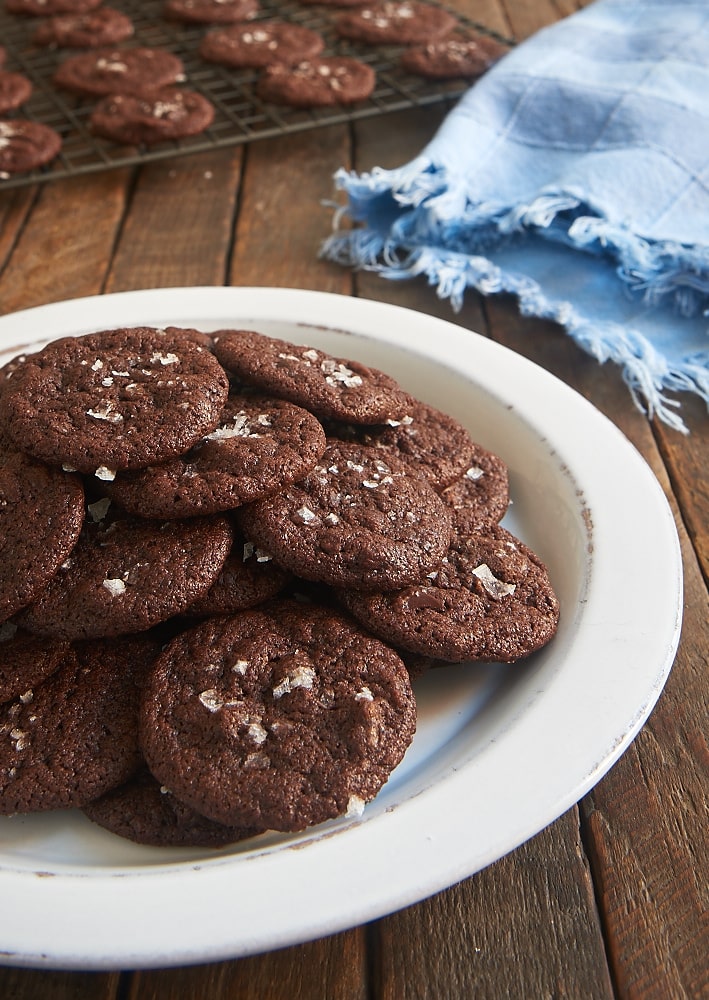
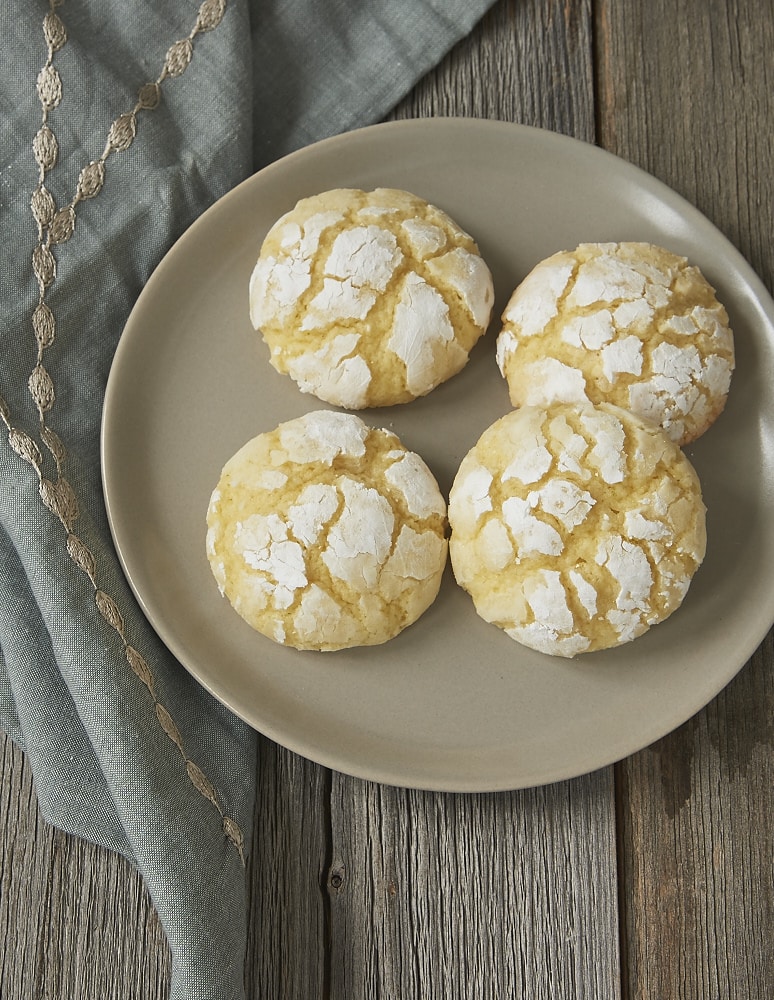


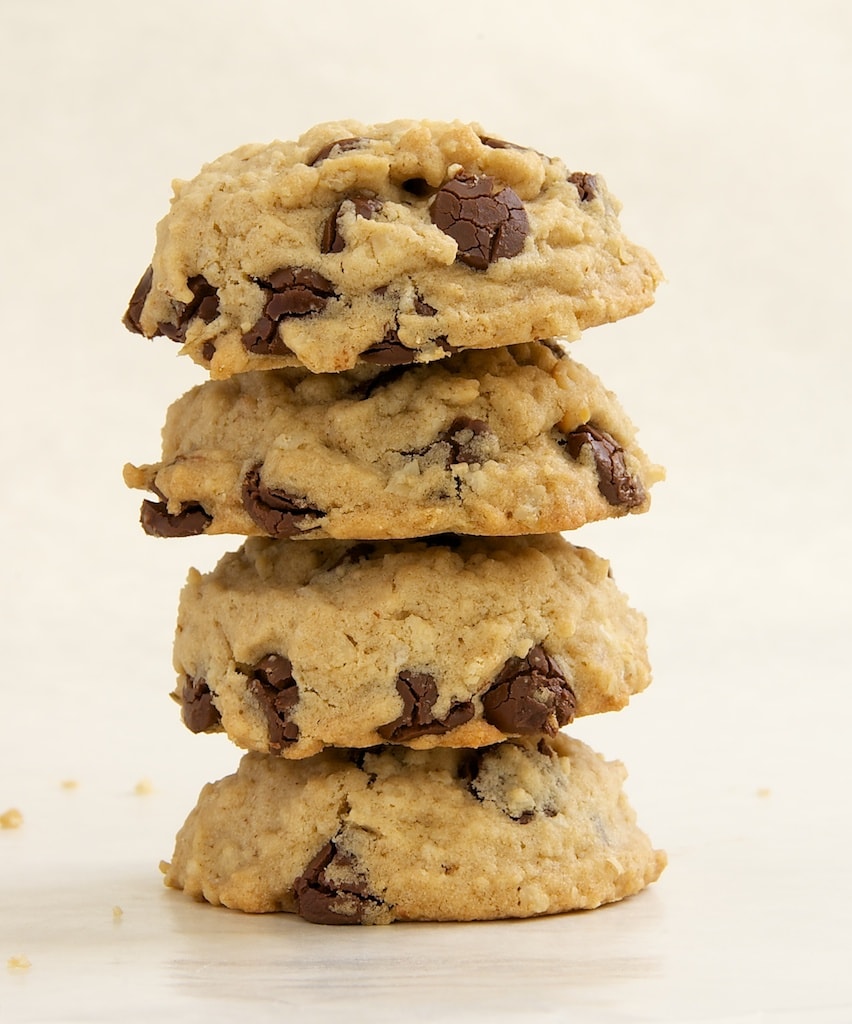
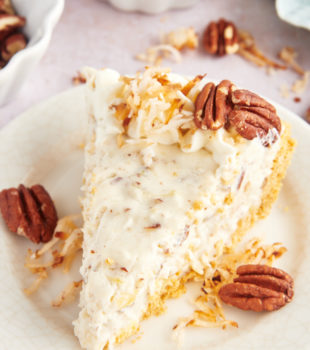
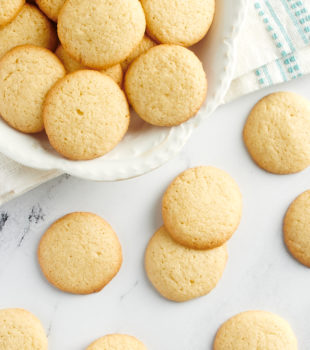
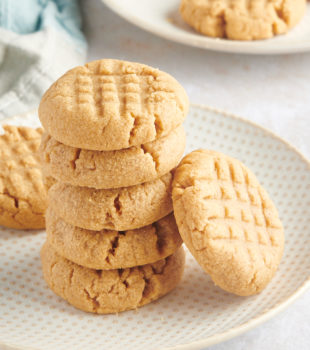


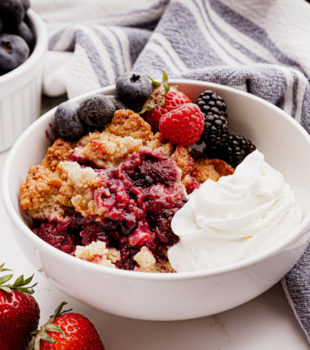
24 Comments on “How to Keep Cookies from Spreading”
I like a thin crispy cookie, so the warmer the dough, it appears the more the cookies will spread in the oven, correct? I like that. I never wanted a thick, soft cookie… Always want one that is thin, nice and crispy, the way they look on the cookie sheet in your first picture. Thanks for the information!,
Hi, Joan. The warmer the dough, the more the cookies will spread. That doesn’t necessarily equate to crispy. That usually involves reducing some of the liquid ingredients in the recipe.
I love this list, if I had a nickel for every person who says “my cookies spread why?” and I’m like “SO MANY THINGS COULD BE WHY” lol. Pinning!
good tips, thank you! yes, I’ve had a few cookie sheets that ended up looking like four leaf clovers after after they merged together, thank you for this best practices list!
You’re welcome! I’ve had some cookies look very much like that, too.
I made oatmeal cookies. I used the recipe I’ve used for years with success! It uses shortening and molasses. I also used a cheaper brand of sugar. Why do the cookies flatten completely, I mean they hug the cookie sheet! They’re as thin as paper!!! They taste good, but terrible looking!!
Hi, Candy. If that recipe always works for you, then I’d guess it’s whatever you did differently this time. If that was just a different sugar, then maybe that’s it. Otherwise, think through the things I listed above to see if any of those might be a problem.
Hi Jennifer. Thank you so much for helping us troubleshoot our cookies. Wondering if you would have an idea on the following recipe. (This is a recipe I have made for my husband several years, passed on to me from his mother. I don’t know what changed–guessing the margarine content?). For years it was always a great cookie to make, shape into a log and slice and bake, either from the refrigerator or the freezer. For the past 6 years (?), maybe, (give or take), the cookies spread so much, even after trying to add more flour, etc. The cookie now spreads for anyone who has the recipe. I and my mil used to use Imperial, but that no longer works (I am a butter user, except for this recipe. Not sure if it would be worth trying butter–change the cookie?)
Refrigerator Cookie
3 sticks margarine
1 1/2 cups sugar
2 tsp vanilla
3 cups flour
1 tsp salt
1 tsp soda
Cream margarine and sugar. Add vanilla. Combine flour, salt and soda. Add to creamed mixture. Refrigerate dough; making into logs, if desired.
Bake at 350’ for 10 minutes.
Thank you for your thoughts…
Hi, Patti! Have you changed brands of any of your ingredients? That can definitely make a difference. For example, store brand sugars are usually smaller grains so that throws off measurements. Margarine has a higher water content and tends to make cookies that spread more than they should. Margarine has also changed over the years to address the presence of trans-fats in those products. That could be contributing to the issue as well. I don’t bake with margarine, so my first attempt would be to make the recipe as is but using butter.
Jennifer, thank you for your suggestions! I’ll try all butter and see how that works. (My only other thought before writing you was to try using margarine and butter or margarine and shortening).
Thank you, also, for the reminder of sugar.
Merry Christmas!
Good luck!
Jennifer, using just butter worked wonderfully!
Thank you once again!!!
I’m so glad it worked, Patti!
I use to be a truck driver. I would pick up backhauls from the Sugar plant in Clewiston, Florida. I would watch them bag sugar while waiting for my load. There is a shoot that comes out of the factory that feeds the bagging machine. They would be bagging Dixie Crystal Sugar. Shut the bagging machine off, switch out the bags and put Evercane bags in and start the machine up, then do you same for Publix Sugar, and Albertsons Sugar. I can tell you for a fact, that there is no difference between Dixie Crystal, Evercane, Publix and Albertsons, other than the bag.
I have a chocolate chip cookie recipe that is my family’s favorite of all recipes I’ve tried. It calls for 1.5 cups of butter, melted. I don’t refrigerate the dough and bake immediately and the cookies never spread. They always come out as the picture of your Oatmeal Peanut Butter Choc Chip cookie above. I wonder why this recipe always works?
Hi, Susan. Melting butter or not chilling the dough shouldn’t necessarily mean cookies that spread too much. The notes about those things above are in reference to doing something differently from the recipe. If your recipe calls for melted butter and not chilling the dough, that’s perfectly fine.
Thank you for these tips. I am tired of having square cookies from cutting them apart. I felt that I had lost my touch but I never took into account that ingredients change their structure.
That may be why my fudge doesn’t seem to work anymore, either.
I’m glad you’ve found these tips helpful, Kate!
I just made peanut butter cookies with organic peanut butter and they just don’t turn out the same as when I use a name brand peanut butter. Any suggestions please?
Hi, Arlene. Was it a natural peanut butter? Those don’t tend to perform very well in baking. As a general rule, I recommend baking with regular peanut butter.
I made a batch of cookies today. The first two pans the cookies turned out beautifully. The last pan they all ran together. I put the dough in the refrigerator in between batches. Any idea why this would happen? Pans were cool when I put dough on them.
Hi, Carol. It’s usually dough that’s too warm or pans that aren’t cooled between batches. As you said those weren’t the issues, my only other guesses are that the dough wasn’t thoroughly mixed and that last bit behaved differently because of that, or there’s a difference in that last pan itself (dark, different thickness, etc.).
I didn’t realize there were that many reasons for cookies to spread! No wonder this problem happens all the time. This is one example of why baking is harder than it looks! It sounds to me like my main problems are the dough being too warm or possibly overmixing the butter and sugar. I will definitely have to keep these tips in mind for the next time I make cookies.
I hope this helps, Sydney!